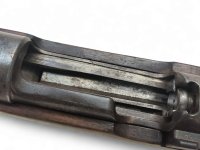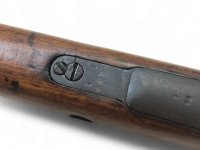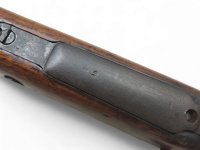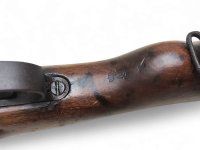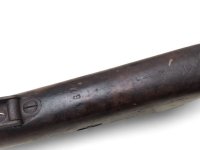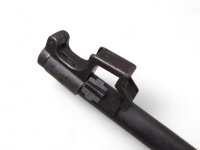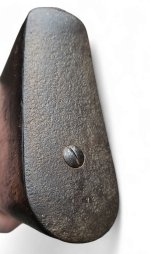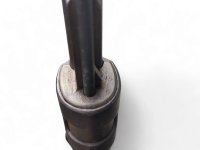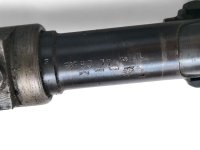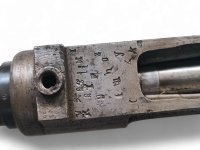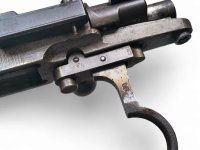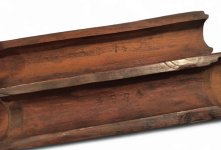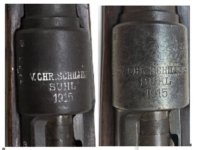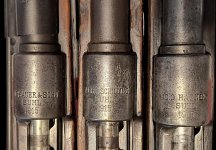Hi Guys,
I've been busy with work and extracurricular volunteer stuff, but still found some time to go after this one a couple weeks ago. This is a nice bookend to early VCS production, being toward the tail end of 1915. My other 1915 VCS is the earliest known and was built off a reclaimed Spandau 1905 receiver while Haenel was getting geared up to supply receivers to the consortium. You can find that one here for comparison:

 www.k98kforum.com
www.k98kforum.com
Anyway, I had wanted a proper, marked 1915 VCS since I let the last one that popped up go to a friend. This is #11 in the study, and appears to have been not previously recorded. (Thought you'd like that Paul!)
On to the rifle itself. The metal was fuzzy and there was a fair amount of active rust in places that I resorted to steaming to convert/neutralize (this was one of the rare times I felt compelled to) It ended up turning out nicely with a limited, conservative cleaning. Great wood too. The only evidence I see of rework is a renumbered early Amberg bolt and a "7"/ Rastatt marking on the buttplate. The scrubbing style of the bolt is identical to Marc's 1905 DWM Rastatt rework:

 www.k98kforum.com
www.k98kforum.com
The rest of the rifle looks to be factory, save the floorplate. Based on the patina though, the it is likely a wartime m/m as it as been with the rifle for ages. The follower matches, so probably not an extended magazine scenario either. The rear action screw was buggered, but fortunately still usable. There are stains from a bolt cover, particularly on the left side of the stock. The barrel is a JPS finished Bismarckhutte blank. The blue under the wood is gorgeous.
Here is the data:
Receiver 4674 e
Barrel 4674 (BJ 77 S&S)
Front Sight 74
Rear Sight Leaf 74
Sight Slider 74
Ejector Box 74
Trigger Sear 74
Front Barrel Band 74
Rear Barrel Band 74
Trigger Guard 4674
Trigger Guard Screws 74,74
Floor Plate mm
Follower 74
Stock 4674
Buttplate 4674 e
Bayonet Lug 74
Handguard 4674
Bolt body 4674 (force matched)
Safety mm
Cocking Piece mm
Shroud mm
Firing Pin mm
Extractor mm
Cleaning rod 47




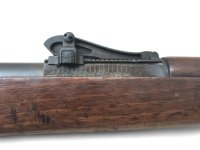

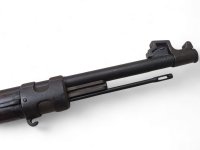
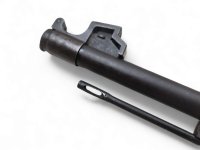
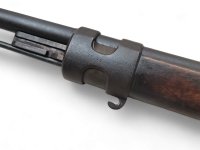
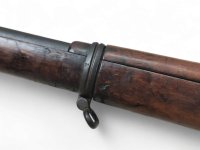



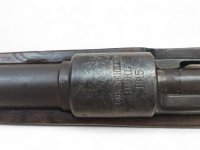

I've been busy with work and extracurricular volunteer stuff, but still found some time to go after this one a couple weeks ago. This is a nice bookend to early VCS production, being toward the tail end of 1915. My other 1915 VCS is the earliest known and was built off a reclaimed Spandau 1905 receiver while Haenel was getting geared up to supply receivers to the consortium. You can find that one here for comparison:
Matching 1915 VCS "a" Block (1905 Spandau Receiver)
Here's a pretty wild one-- I picked this up with a "take a shot" on Gunbroker. The rifle was advertised as a matching Spandau 1905, but the fireproof was a Thuringian style Eagle, so definitely not Spandau assembled. The early thought was possibly Erfurt assembled, though the pics were not...
Anyway, I had wanted a proper, marked 1915 VCS since I let the last one that popped up go to a friend. This is #11 in the study, and appears to have been not previously recorded. (Thought you'd like that Paul!)
On to the rifle itself. The metal was fuzzy and there was a fair amount of active rust in places that I resorted to steaming to convert/neutralize (this was one of the rare times I felt compelled to) It ended up turning out nicely with a limited, conservative cleaning. Great wood too. The only evidence I see of rework is a renumbered early Amberg bolt and a "7"/ Rastatt marking on the buttplate. The scrubbing style of the bolt is identical to Marc's 1905 DWM Rastatt rework:
1905 DWM Gew 98 Unit Marked
A recent purchase from Legacy. Yet another unit marked Gewehr this time to the 151st Infantry regiment who were part of the 37th Division. The 37th was rated as first class by Allied intelligence. The 37th started the war on the Eastern front fighting in major battles such as Tannenberg & the...
The rest of the rifle looks to be factory, save the floorplate. Based on the patina though, the it is likely a wartime m/m as it as been with the rifle for ages. The follower matches, so probably not an extended magazine scenario either. The rear action screw was buggered, but fortunately still usable. There are stains from a bolt cover, particularly on the left side of the stock. The barrel is a JPS finished Bismarckhutte blank. The blue under the wood is gorgeous.
Here is the data:
Receiver 4674 e
Barrel 4674 (BJ 77 S&S)
Front Sight 74
Rear Sight Leaf 74
Sight Slider 74
Ejector Box 74
Trigger Sear 74
Front Barrel Band 74
Rear Barrel Band 74
Trigger Guard 4674
Trigger Guard Screws 74,74
Floor Plate mm
Follower 74
Stock 4674
Buttplate 4674 e
Bayonet Lug 74
Handguard 4674
Bolt body 4674 (force matched)
Safety mm
Cocking Piece mm
Shroud mm
Firing Pin mm
Extractor mm
Cleaning rod 47

















